Formentera: A Beautiful Blend of History, Tradition, and Idyllic Tourism
Friday, August 30, 2024
Formentera is the smallest and southernmost island of the Balearic Islands of Spain. Known for its clear waters, white sandy beaches, and tranquil environment, it contrasts sharply with its more bustling neighbour, Ibiza. Despite its modest size, Formentera has a rich history and a vibrant cultural heritage that adds depth to its appeal as a top Mediterranean destination.
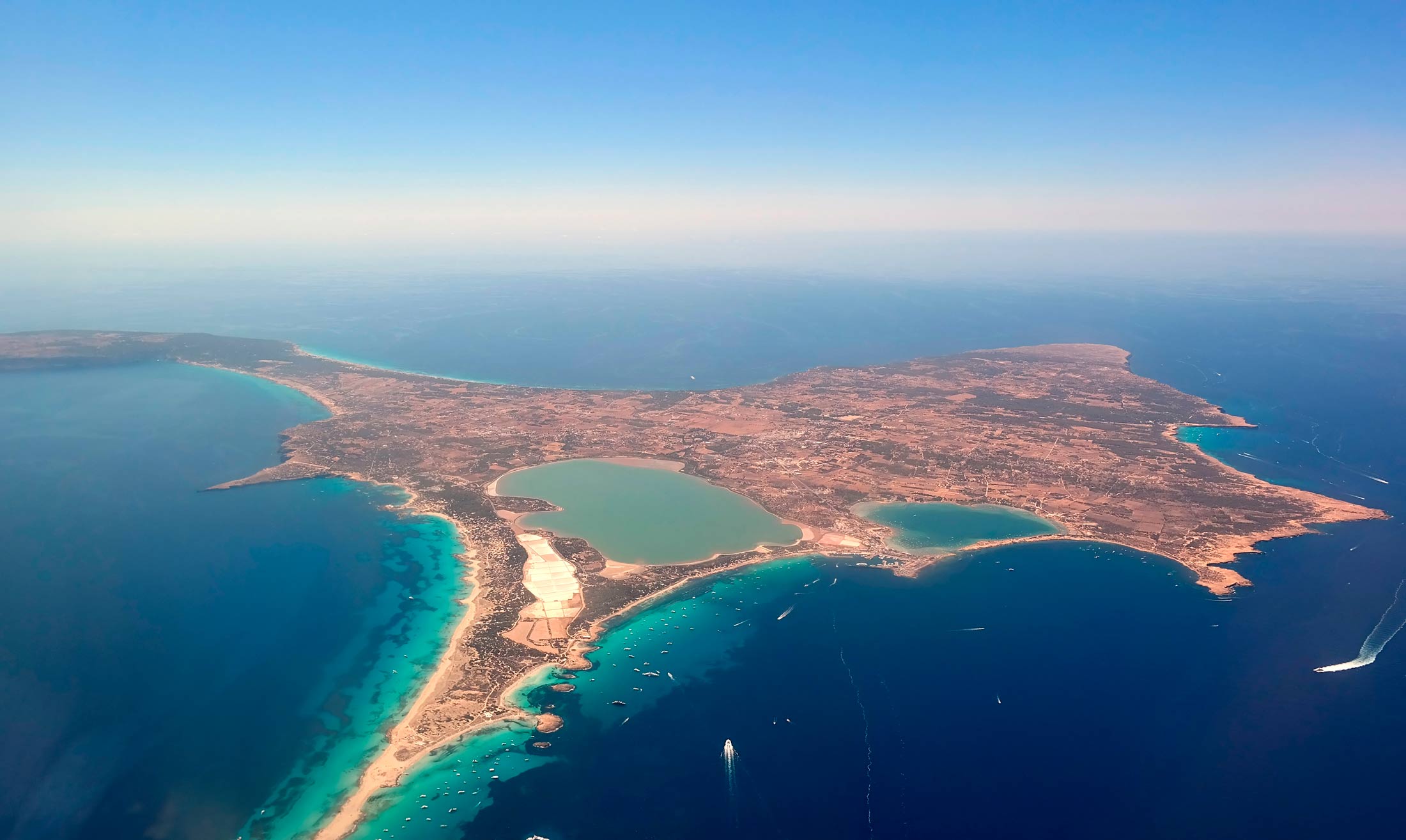
The history of Formentera is as layered as it is fascinating. The island was possibly known to the ancient Greeks and later occupied by the Romans, but it was during the medieval era that it witnessed significant transformations. It was frequently raided by pirates due to its strategic position in the Mediterranean. This threat led to depopulation, with the island often being completely abandoned before resettlement efforts in the 18th century under the leadership of King Charles III of Spain.

Significant fortifications from this era still dot the landscape, most notably the watchtowers used to spot pirates. These historical structures offer a glimpse into the island’s tumultuous past and are now intriguing sites for visitors.
Formentera’s cultural fabric is stitched with various traditional Spanish and Balearic elements. The island still celebrates several historic festivals with great zeal. One of the most important is the Fiesta de San Juan, which heralds the arrival of summer with bonfires, dancing, and horseback rituals that are deeply embedded in local lore.
The traditional crafts of Formentera, like basket weaving and pottery, continue to thrive, supported both by local demand and the interest of visitors. These crafts not only provide a livelihood for local artisans but also help maintain the cultural identity of the island.

Formentera’s development into a tourist destination began in earnest in the 1960s and 1970s when the island was discovered by hippies who appreciated its untouched natural beauty and tranquillity, setting a foundation for the kind of tourism that would later define it. Unlike other Balearic islands that pursued high-volume tourism strategies, Formentera took a different path, focusing on sustainable and eco-friendly practices.

The island’s authorities have been particularly forward-thinking in terms of preserving its environment. For instance, the use of motor vehicles is highly regulated to prevent pollution and maintain the quality of air and natural settings. This eco-conscious approach has made Formentera an attractive destination for those seeking a more serene and authentic experience.
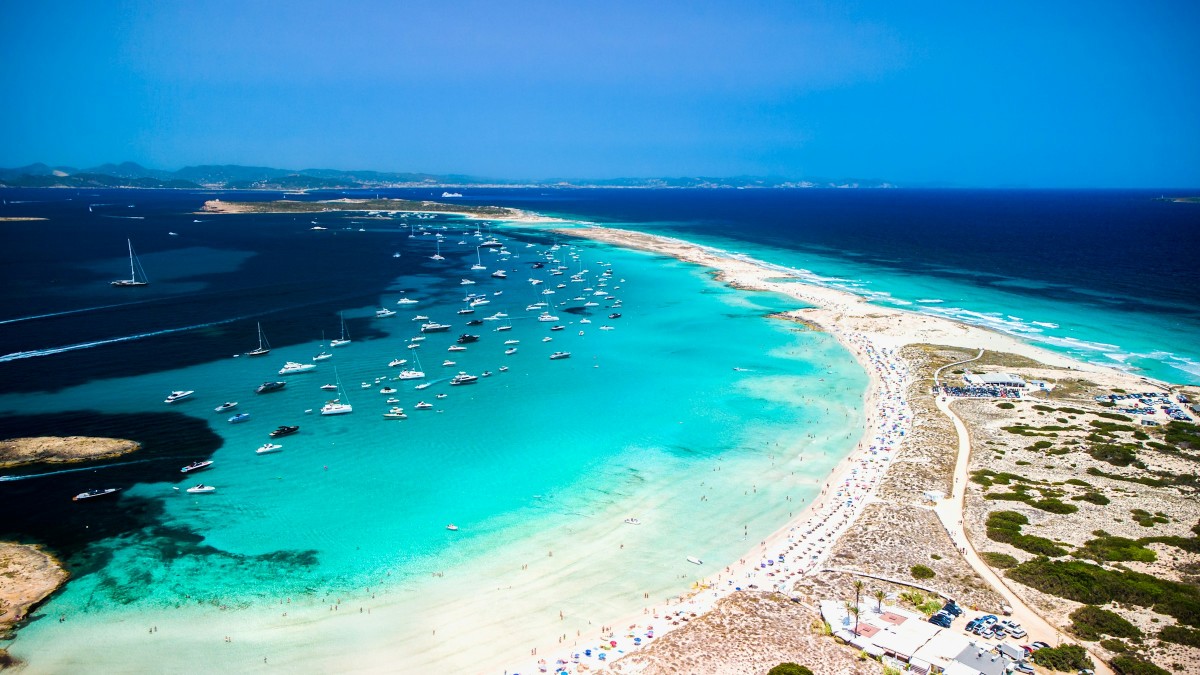
Today, Formentera offers an array of experiences that cater to diverse interests. The pristine beaches, such as Illetes and Es Pujols, remain the primary draw. However, the island is also popular for its cycling routes, walking trails, and exceptional spots for snorkelling and sailing.
The local cuisine, which is a delicious blend of Mediterranean flavours, provides another compelling reason to visit. From fresh seafood to traditional pastries, the food reflects the island's blend of historical influences and its strong connection to the sea.
Formentera is much more than just a picturesque backdrop for sun-seekers. It is an island steeped in history, alive with tradition, and deeply committed to preserving its natural beauty while accommodating tourists. For travellers looking to escape the bustle of modern life and dive into an experience that balances relaxation with cultural enrichment, Formentera offers the perfect destination. As it continues to develop sustainably, it sets an example for small-island tourism around the world, proving that it is possible to welcome visitors without losing the essence of what makes a place truly special.
 2
Like
Published at 6:33 PM Comments (0)
2
Like
Published at 6:33 PM Comments (0)
The Wild Boar Dilemma in Spain
Saturday, August 24, 2024
In recent years, Spain has grappled with an escalating environmental and social issue stemming from one of its oldest wild inhabitants - the wild boar (Sus Scrofa). Known for their adaptability and resilience, wild boars have rooted themselves in Spanish culture, history, and ecology. However, their rapidly growing populations across various regions have raised serious concerns due to their impact on human settlements, agriculture, and native wildlife.
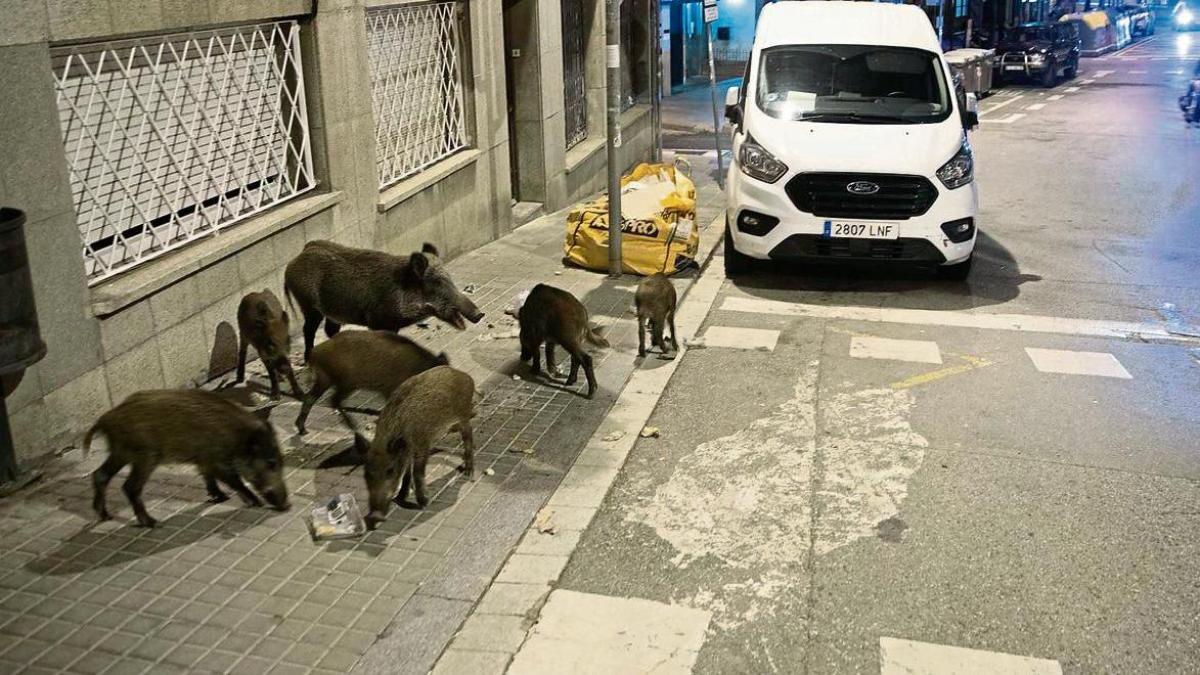
The population of wild boars in Spain has seen an unprecedented increase in recent decades. Factors contributing to this boom include the abandonment of rural areas, changes in agriculture, reforestation efforts, a lack of natural predators, and the adaptable nature of these creatures. They thrive in varied habitats, from the lush forests of the north to the Mediterranean scrublands. With fewer people living in rural areas to hunt them and changes in hunting regulations, boar populations have grown unchecked, leading to more frequent encounters with humans.
Wild boars have a profound impact on the environment and biodiversity. Their feeding habits lead them to dig through the soil, which can cause significant damage to native flora and lead to soil erosion. This alters the natural landscape and can pave the way for invasive plant species to take hold. Additionally, their predation on ground-nesting birds and reptiles can negatively affect local biodiversity. The balance of ecosystems is at risk when one species, such as the wild boar, dominates the environment unchecked.
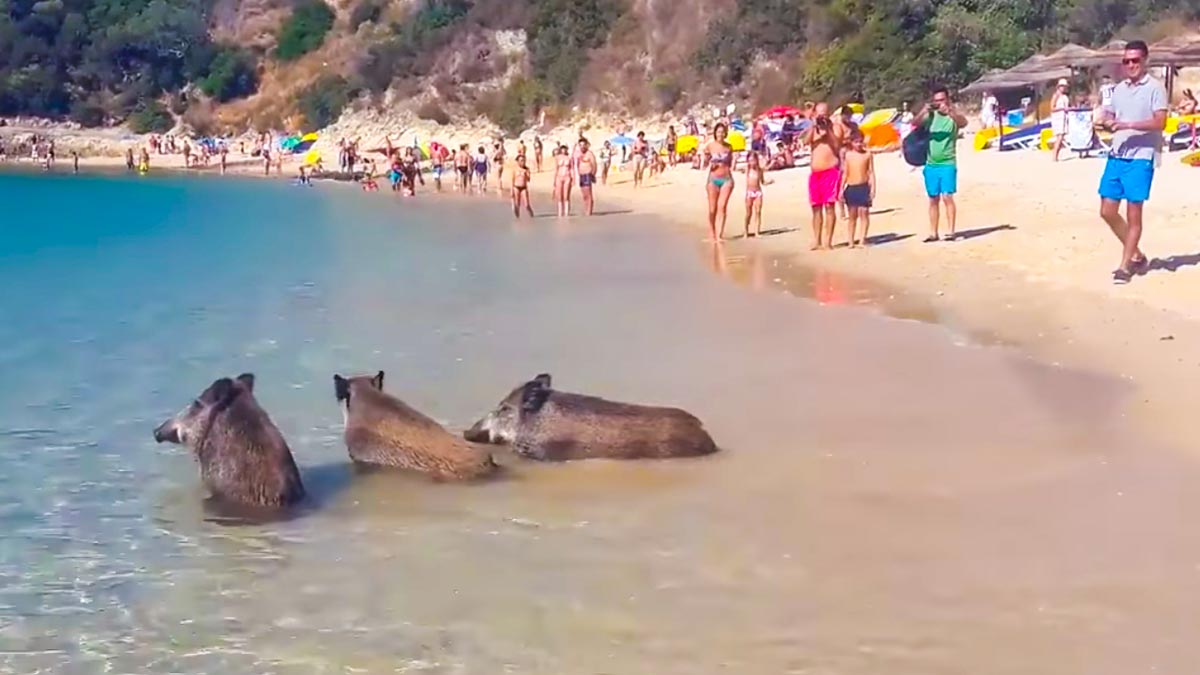
Perhaps the most visible and concerning aspect of Spain's wild boar problem is their increasing interaction with human populations. Boars are venturing more frequently into urban areas, drawn by the promise of easily accessible food in trash bins and gardens. These incursions can lead to traffic accidents, damage to property, and even confrontations with people. Reports of aggressive behaviour towards humans, including attacks, have raised public health and safety concerns.
Moreover, wild boars pose a significant threat to agriculture. They ravage crops, destroy fences, and contaminate water supplies, leading to considerable economic losses for farmers. Their foraging habits wreak havoc on vineyards, cereal fields, and vegetable patches, prompting calls for more action to control their numbers.
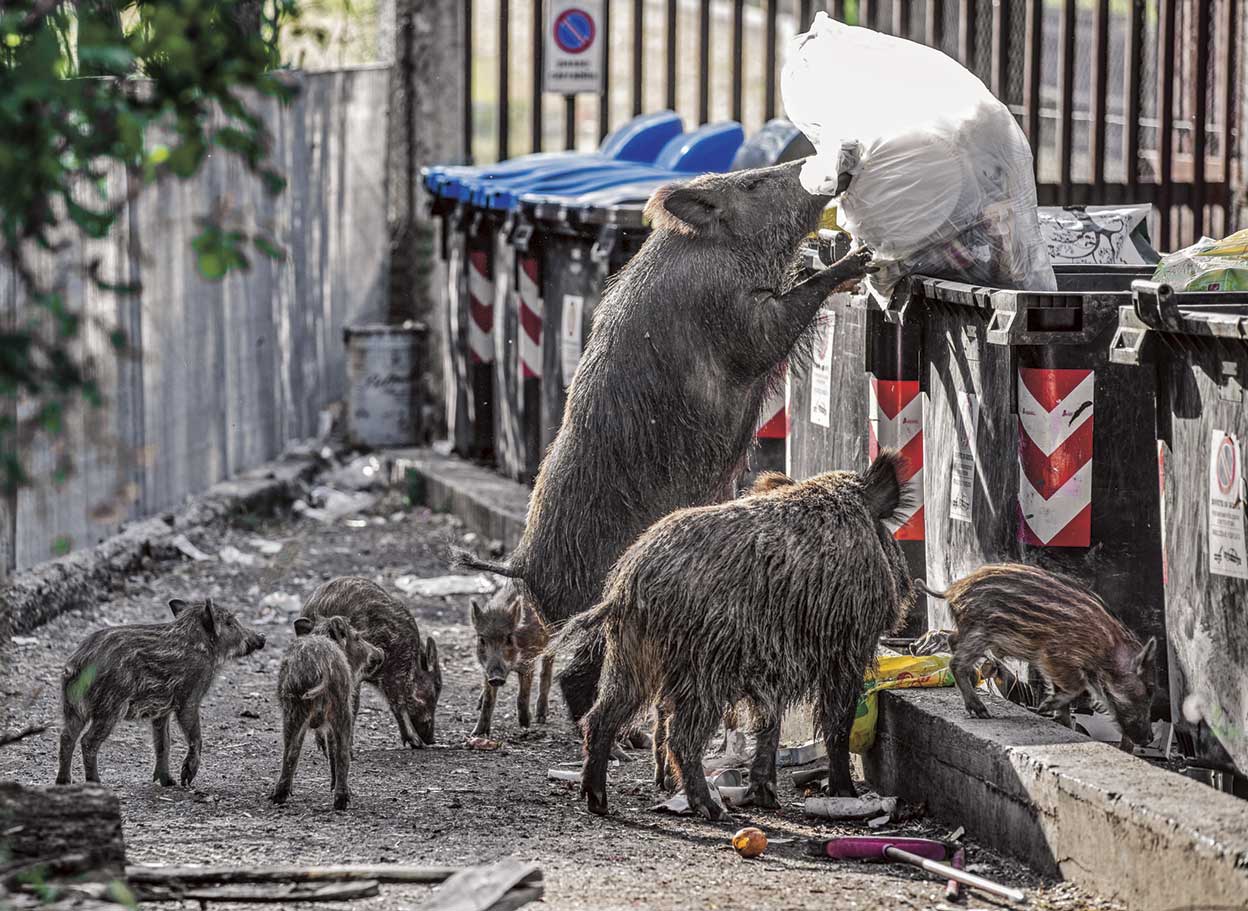
Wild boars also carry diseases that can affect domestic animals and humans. Diseases such as swine fever, tuberculosis, and brucellosis can be transmitted from wild boars to livestock, threatening the agricultural sector and posing serious public health risks. The control of such diseases becomes increasingly challenging with larger boar populations, highlighting the need for effective wildlife management and disease surveillance strategies.
The growing wild boar issue in Spain requires a multifaceted approach. Solutions include more effective population control methods, such as regulated hunting and fertility control, alongside public education on avoiding and managing encounters with wild boars. Additionally, research into more sustainable land management practices could help reduce the habitats' suitability for boars, thereby naturally curbing their numbers.
Urban areas are experimenting with innovative methods to keep boars at bay, including the use of barriers, community compost bins to reduce food sources, and even employing trained dogs to scare them away. Collaboration between communities, government agencies, and wildlife experts is crucial to developing strategies that ensure public safety while preserving Spain's rich biodiversity and the welfare of its wildlife.
The wild boar in Spain is a testament to the complexities of human-wildlife coexistence in the modern world. While they are integral to the country's natural heritage, their unchecked proliferation poses a threat to ecosystems, agriculture, and human settlements. Addressing this issue demands a delicate balance between conservation efforts and the need to protect human interests, a challenge that will require innovative thinking and broad cooperation for years to come.
 2
Like
Published at 3:03 PM Comments (6)
2
Like
Published at 3:03 PM Comments (6)
The Greener Spain
Tuesday, August 13, 2024

Whoever goes to Asturias for the first time, without having read or heard anything about it, instantly gets two surprises: first, that it is a place steeped in history and tradition; and second, that its inhabitants have a unique, friendly nature.
Over a thousand years ago, amid high limestone peaks, green mountains, lush forests, mighty rivers, lakes, springs, waterfalls, orchards, high mountain meadows and vast grazing lands... a kingdom emerged that had thirteen kings, the first of whom was Pelayo, whose memory is especially preserved at the Royal Site of Covadonga in Cangas de Onís. The last was Alfonso III, known as The Great, and for nearly one hundred and fifty years in between the two, a great deal of history –battles included– which was to be decisive in the social and geographical evolution of the Iberian Peninsula as well as that of present-day Spain. Asturias was the first Christian kingdom of this European peninsula and many traces remain of that ancient kingdom –the most prominent among which is Asturian Art, also known as Pre-Romanesque Art, declared World Heritage by UNESCO. There have likewise endured numerous reminders of the nobility and lineage that runs through the bowels of this land, which, since the 14th century, also comprises a Principality, the region most closely linked to the Spanish monarchy since those ancient times right up to the present day.
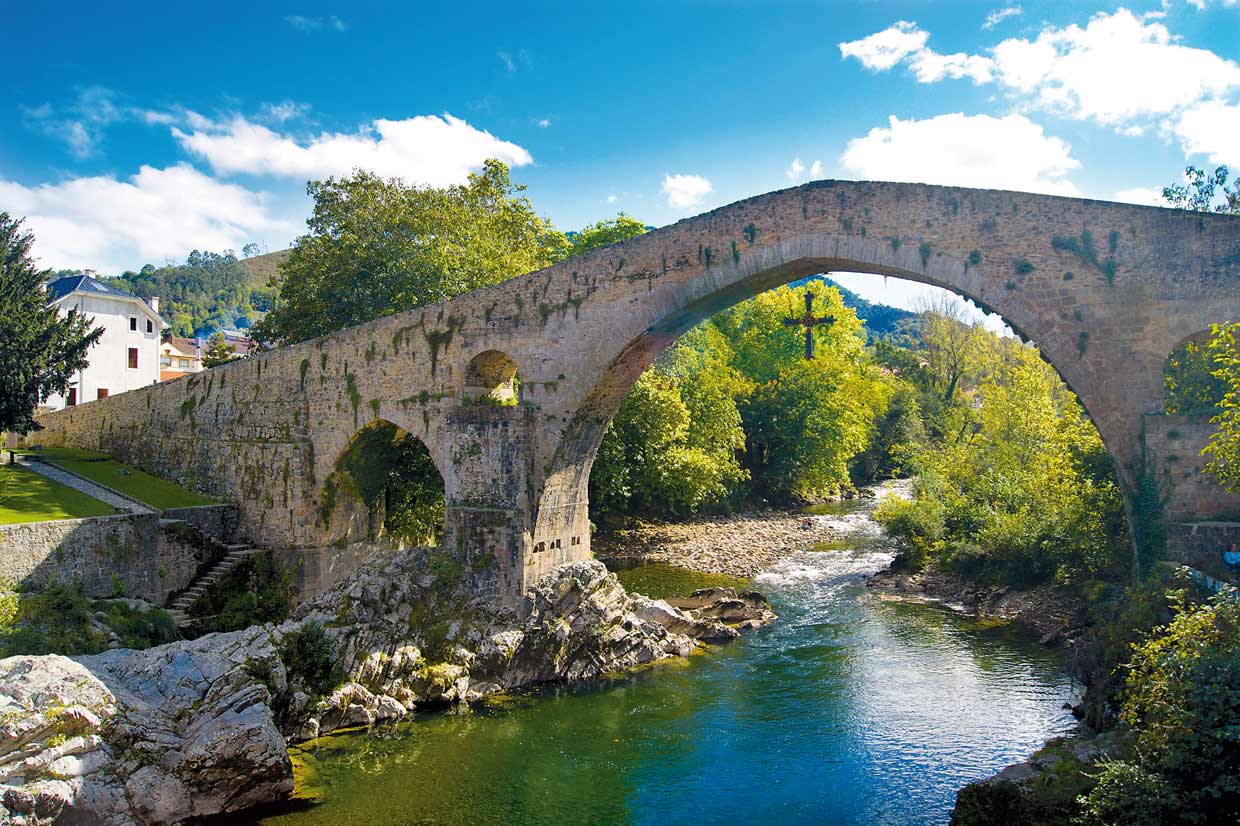
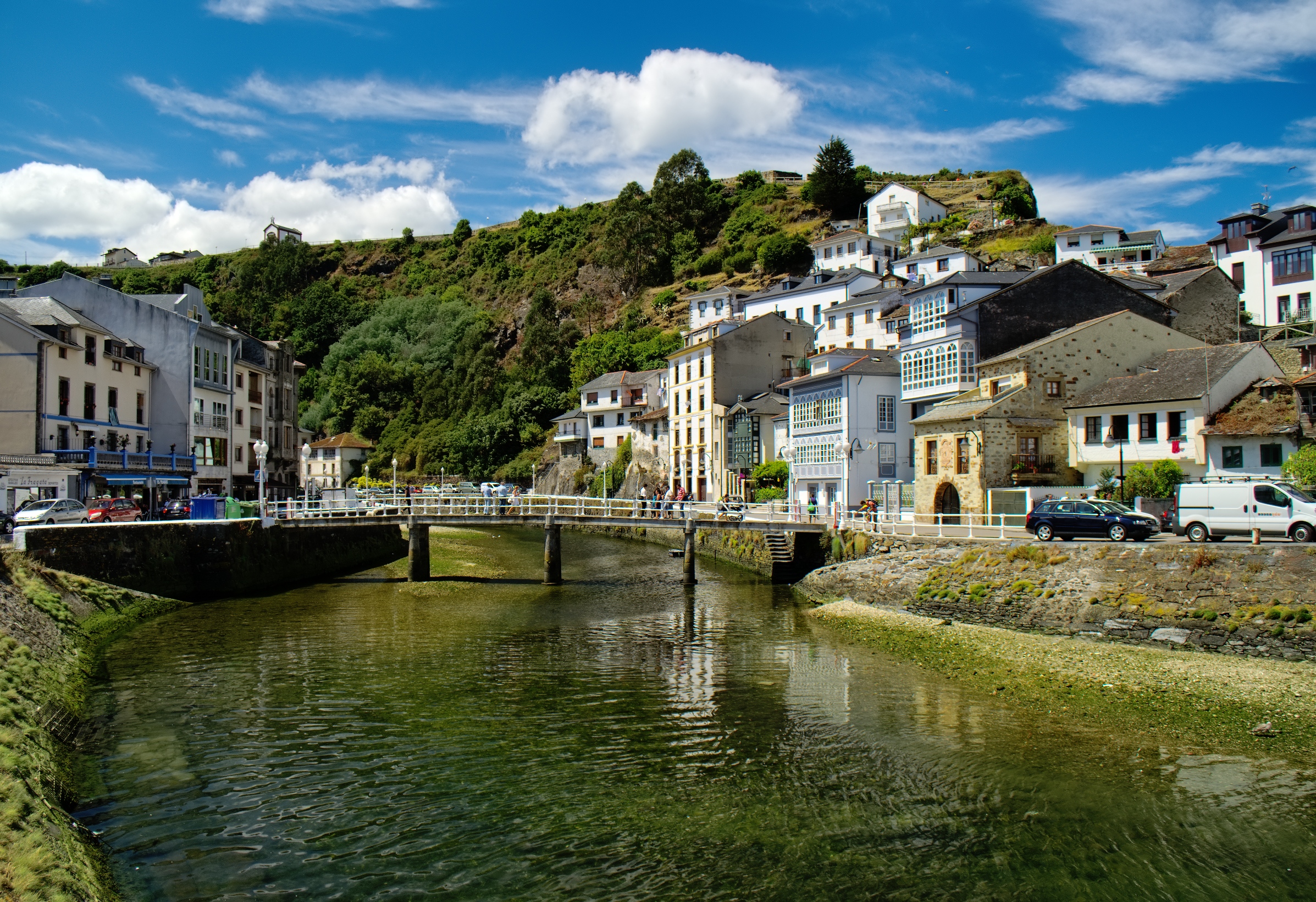
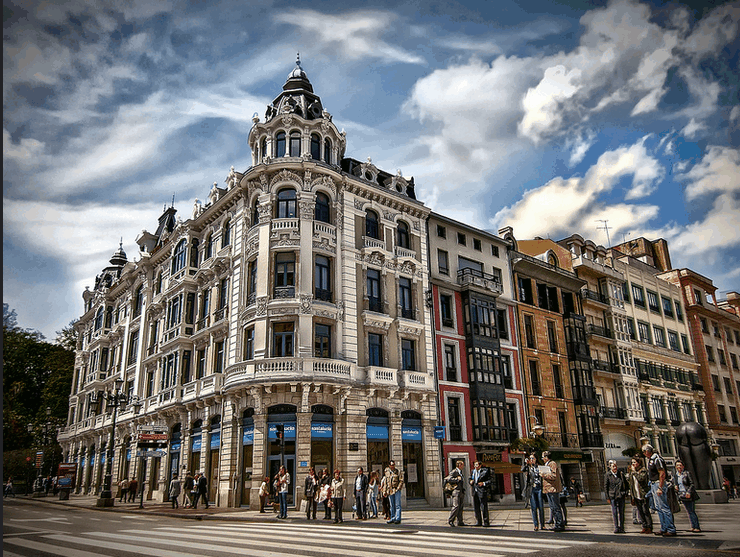
And between the 14th and 20th centuries, so much history…a history of a beautiful, yet forceful rural Asturias, which lives on today; of the development of three cities - Oviedo (the capital), Gijón and Avilés; of almost twenty fishing towns and numerous historic towns and villages; of over 200 beaches and a well-preserved coast; of rich industrial heritage, the result of technological and manufacturing prosperity; of 6 Biosphere Reserves; of 5 World Heritage Caves; of a rich cuisine that makes the region, among other features, the leading cheese-producing area in Europe… and much, much more. A veritable Natural Paradise!
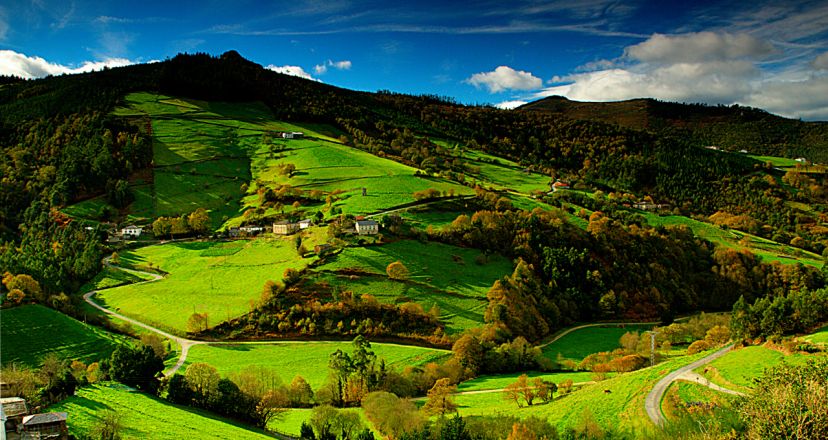
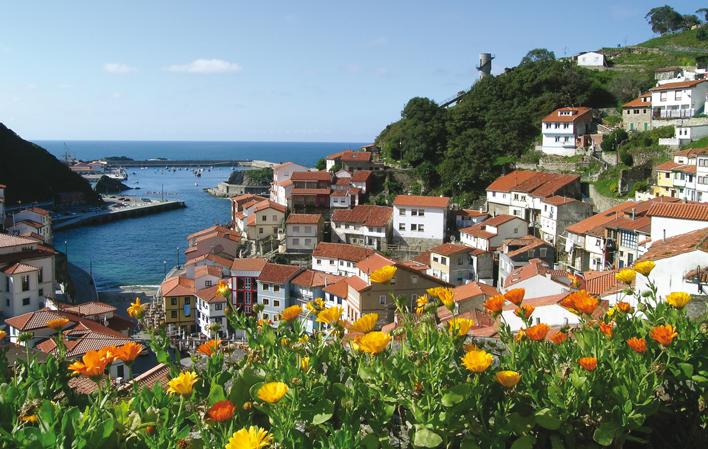
In this region, the cult of the palate can be perceived by the fact that practically everything is celebrated, commemorated, remembered or enjoyed around a table covered with a tablecloth. The green Asturian terrain is a symbol of fertility, food from a rich fertile land and pasture for cattle producing their famous meat and milk. More than three hundred kilometres of coastline and some of the best Cantabrian ports guarantee excellent fish and shellfish cuisine. It can be said, therefore, that Asturias is a true natural pantry.
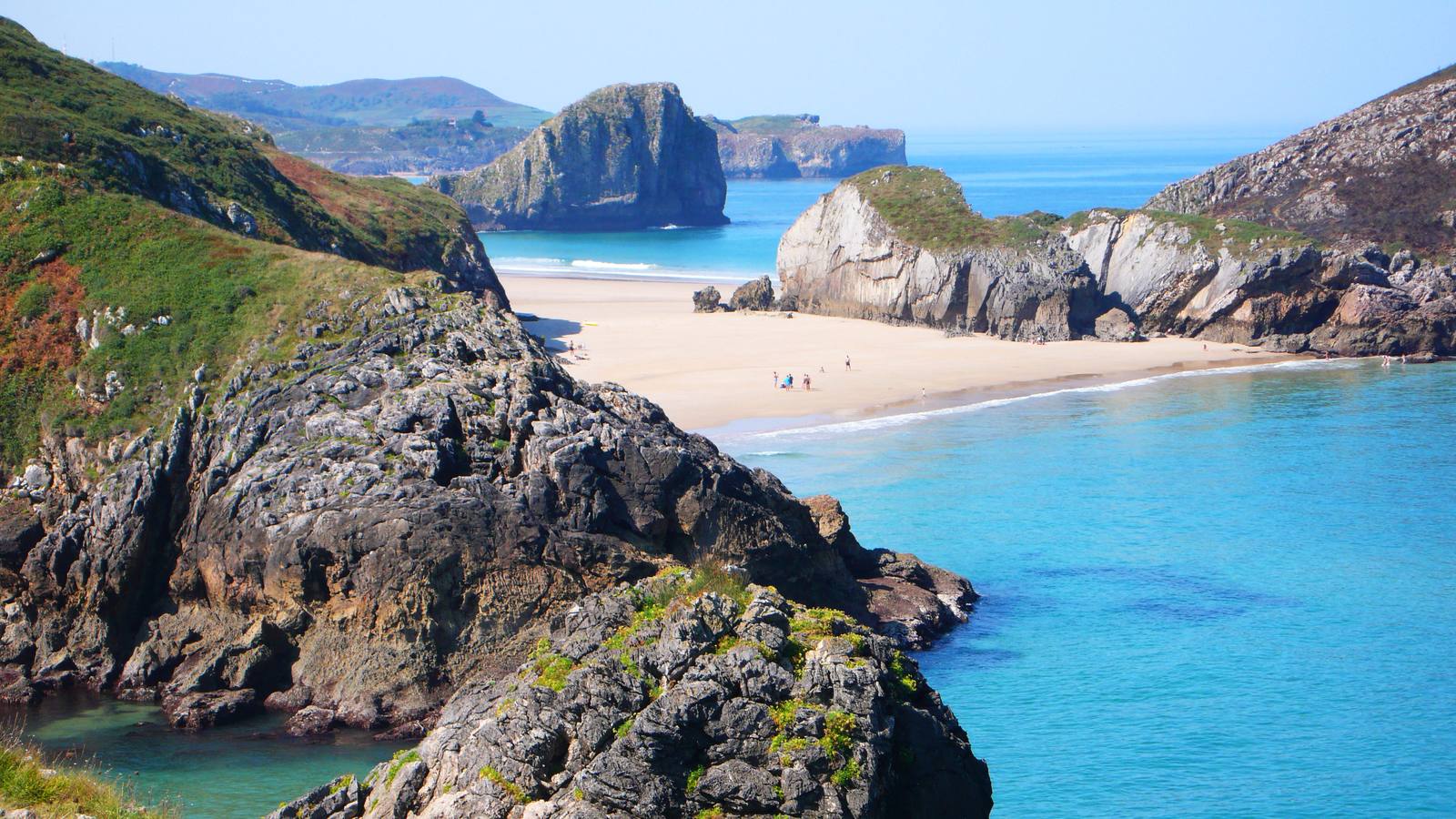

When one head towards southwest Asturias you encounter a surprisingly different landscape. Mountains rising to infinity and winding roads racing towards their shelter, where their tiers appear and we get our first impression 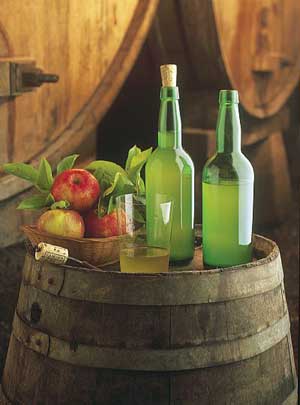 of that heroic mountain viticulture that is practised in Asturias and which constitutes a unique spectacle. They may look like simple terraces capriciously won from the abyss, but you just have to sharpen your gaze to see in their soil the vineyards that stand up proudly, obvious proof that you have entered wine country. of that heroic mountain viticulture that is practised in Asturias and which constitutes a unique spectacle. They may look like simple terraces capriciously won from the abyss, but you just have to sharpen your gaze to see in their soil the vineyards that stand up proudly, obvious proof that you have entered wine country.
However, Asturias doesn’t just have wine. In the year 60BC, Estrabon, the Greek traveller and writer, cited cider without ever having tried it. Today this would almost be a sacrilege. In the juice of the apple, the Asturians have not just their local drink, but also a cultural element that forms part of their way of seeing life, an umbrella beneath which territories are joined together, and even a sign of identity. The sensation of pouring cider, for example, is a unique experience, which is experienced in a special way in Asturias because it is the only cider-making region in which this playful-gastronomic ‘ritual' is carried out.
Asturias is a Natural Paradise and this reality as can be proved by the numbers: a third of Asturias's territory is environmentally protected. For this reason, the traveller encounters beautiful untouched landscapes, among which stand out six gems, the six biosphere reserves recognised by UNESCO.
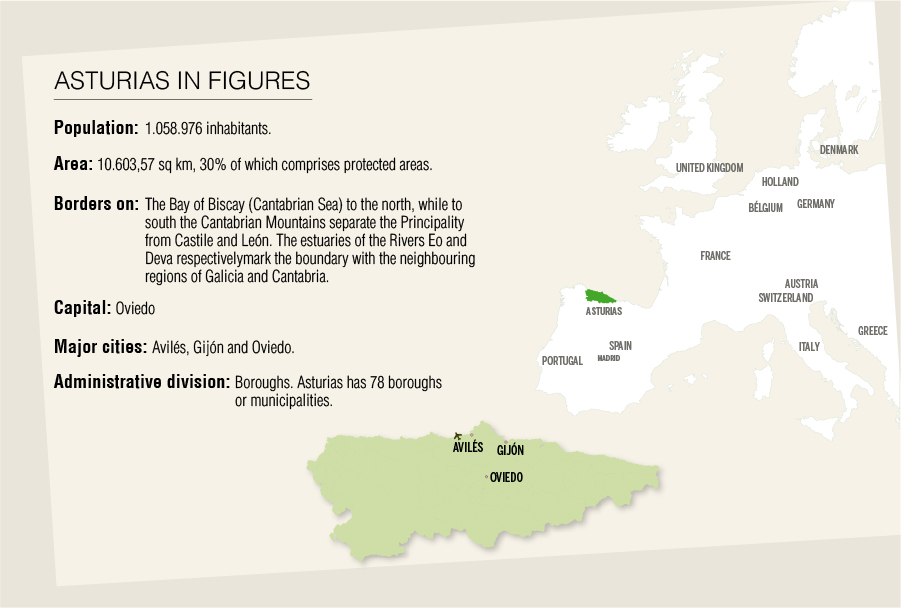
The Asturian coast is one of the best-preserved in the whole of Spain. So much so that its purity makes the cliffs, the level green coastline and the beaches a perfect refuge for those who like untouched nature. In addition, their fishing villages – totalling almost twenty along the three hundred and forty-five kilometres of the coast - have grown, adopting impossible shapes, on hillsides which shelter the ports, and even remember the days when they were whaling docks, landing points for kings and a shelter from storms. Asturias has so much more to offer so why not give it a go and experience the ‘Green Spain’.
 2
Like
Published at 2:44 PM Comments (0)
2
Like
Published at 2:44 PM Comments (0)
Spain's Most Unusual Hotels
Thursday, August 8, 2024
There are destinations that offer many leisure options, but when we stay in certain establishments the pleasure of the trip can be enhanced, either due to their spectacular facilities, their luxury, their services or the special characteristics they have.
So, if you want to live a completely unique experience in one of your getaways, some of the most surprising hotels in Spain will help you live an unforgettable one. Here are some of the most unusual hotels in Spain:
Hotel Aire de Bardenas
https://airebardenas.com/
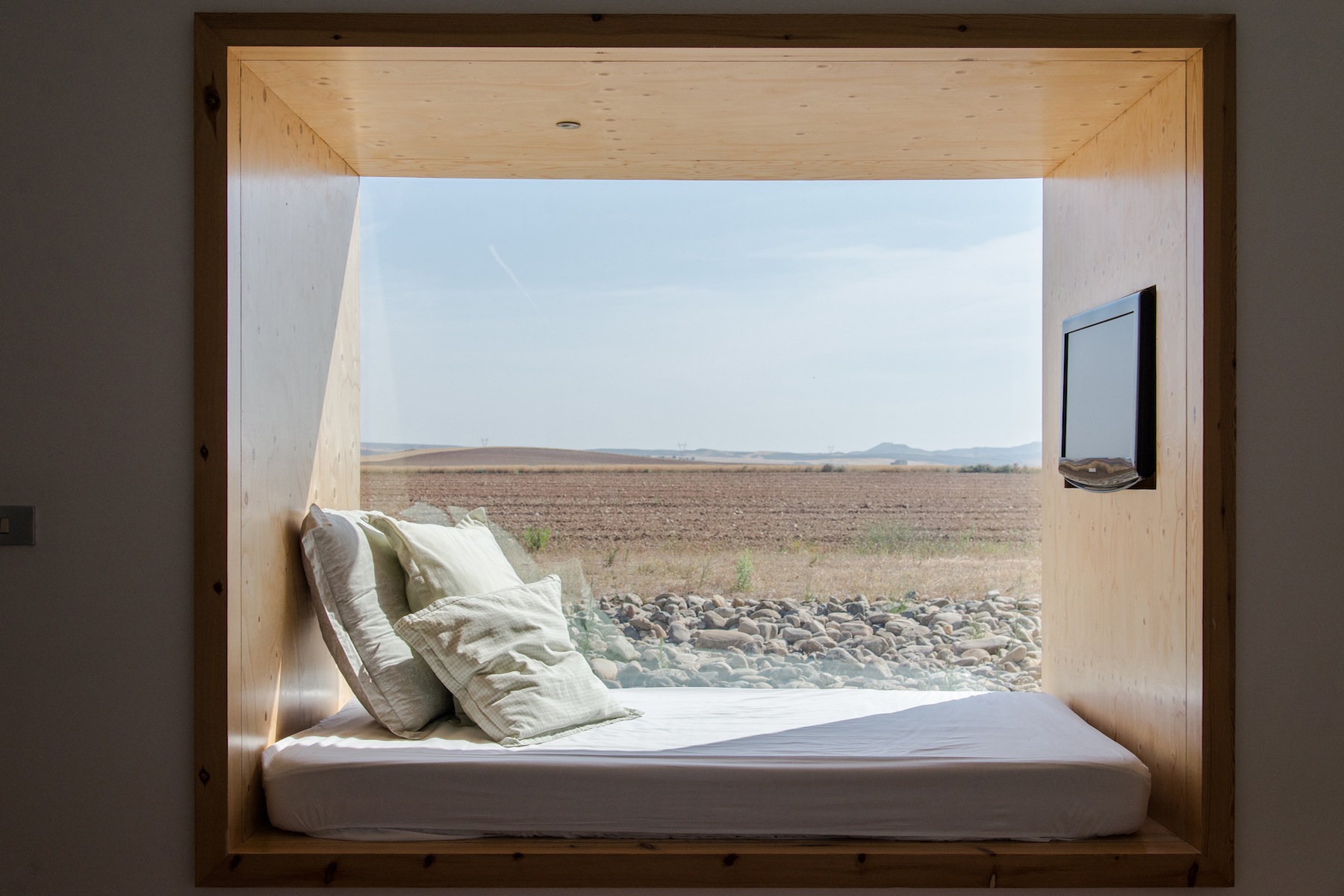

In the surroundings of the Bardenas Reales Natural Park, a 4-star establishment awaits you that will make you feel like you are in the middle of the desert under the stars, well you actually are! I am referring to the Hotel Aire de Bardenas (Ctra. De Ejea, km 1, 31500 Tudela, Navarra), whose architecture and design have been recognised with awards more than twenty times around the world.
Some of their rooms are in square cubicles, so you can choose between one of these unique cubist buildings to spend a few days of rest and adventure. Some of its rooms have a spectacular outdoor circular bathtub, others are characterised by their private patio and the suites also include a double indoor bathtub.
If you are still looking for something more special, at the Hotel Aire de Bardenas you can stay in inflatable bubbles in the open air, where you can sleep under a starry sky, away from stress, noise and worries. These bubbles also have all the comforts, as they include a shower, a hairdryer, a bathrobe, slippers, an eye mask and a full minibar.
The hotel offers a series of activities for guests, such as a visit to the Bardenas Reales Natural Park by Segway, guided tours through the desert, explanation and tastings on the process of making extra virgin olive oil and massage services. You will find it about 7 kilometres by car from the city of Tudela, following the NA-125 road.
Cave Houses
https://www.casascuevacazorla.com/home
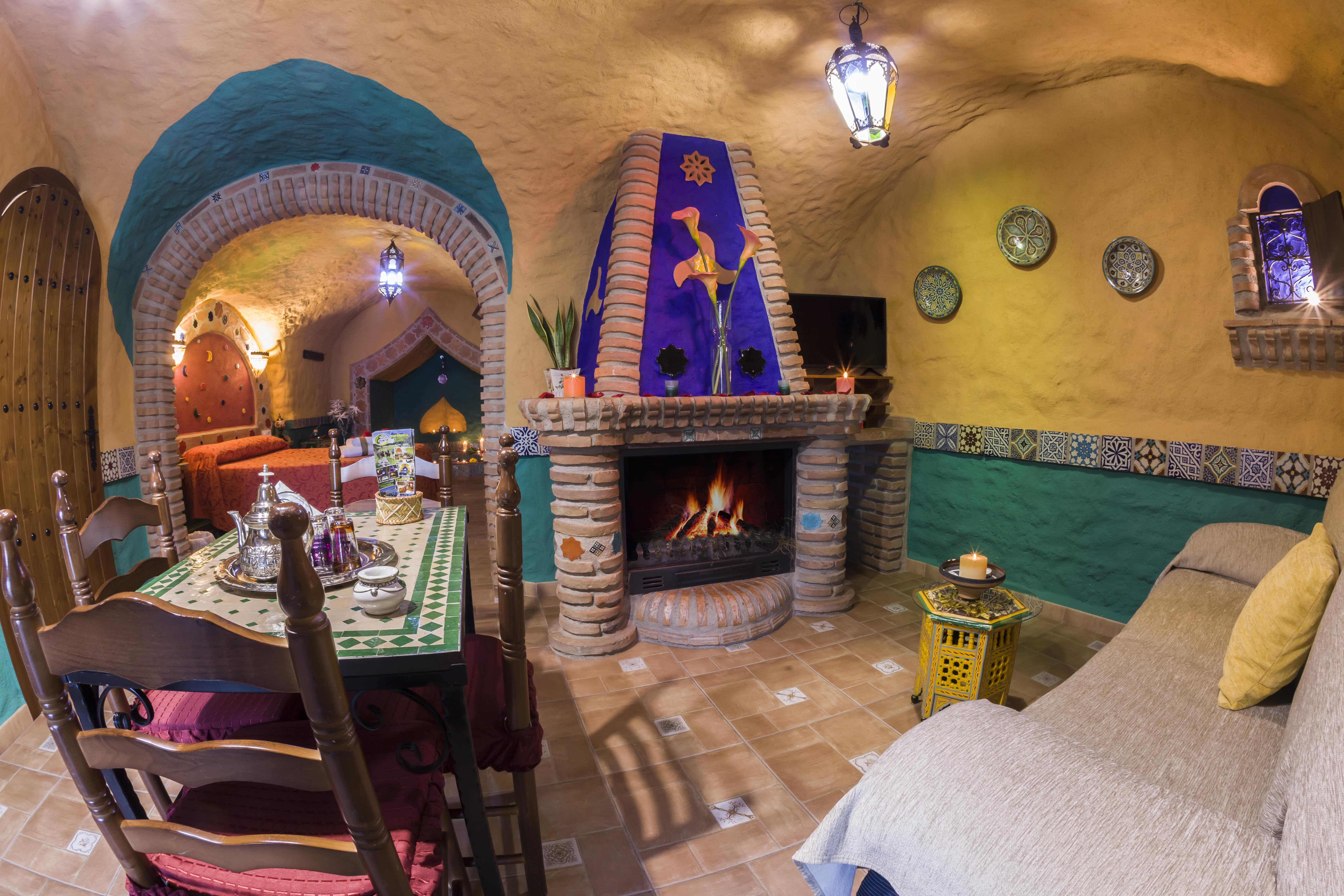
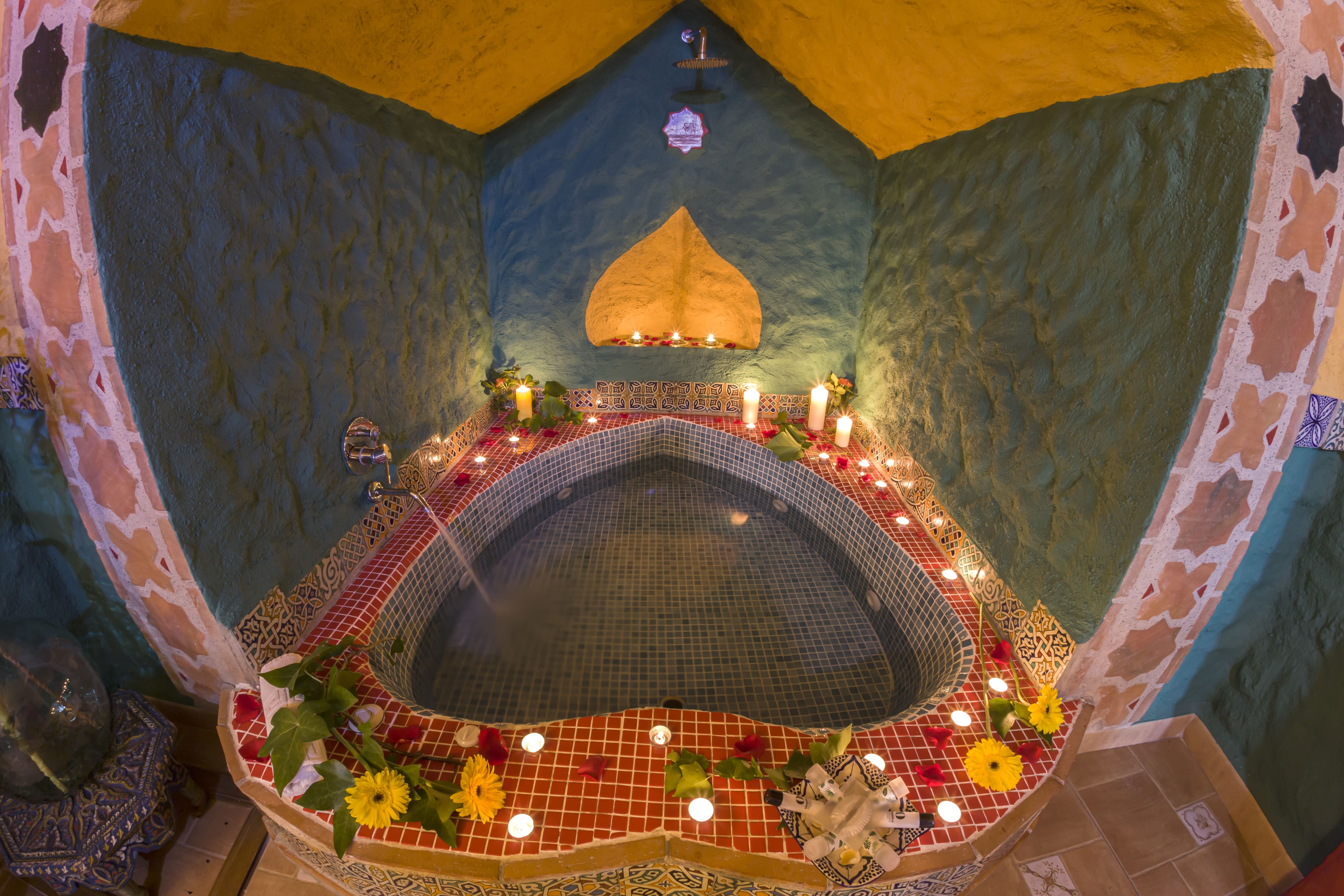
There are many cave hotels where you can stay in Europe, but in Spain, there are also some of these amazing places to stay without having to travel abroad.
One example is the Cueva de Cazorla Houses (Calle Cuevas Nuevas, 37, 23486 Hinojares, Jaén, Andalusia). Located in the Cazorla National Park, each of its houses and caves is completely different, since they are decorated by themes. With regard to its 4 caves, perfect for couples, all of them have a living room with a fireplace and a private Jacuzzi and share a saltwater pool outside.
Vivoo Landscape Hotel
https://www.vivood.com/en/

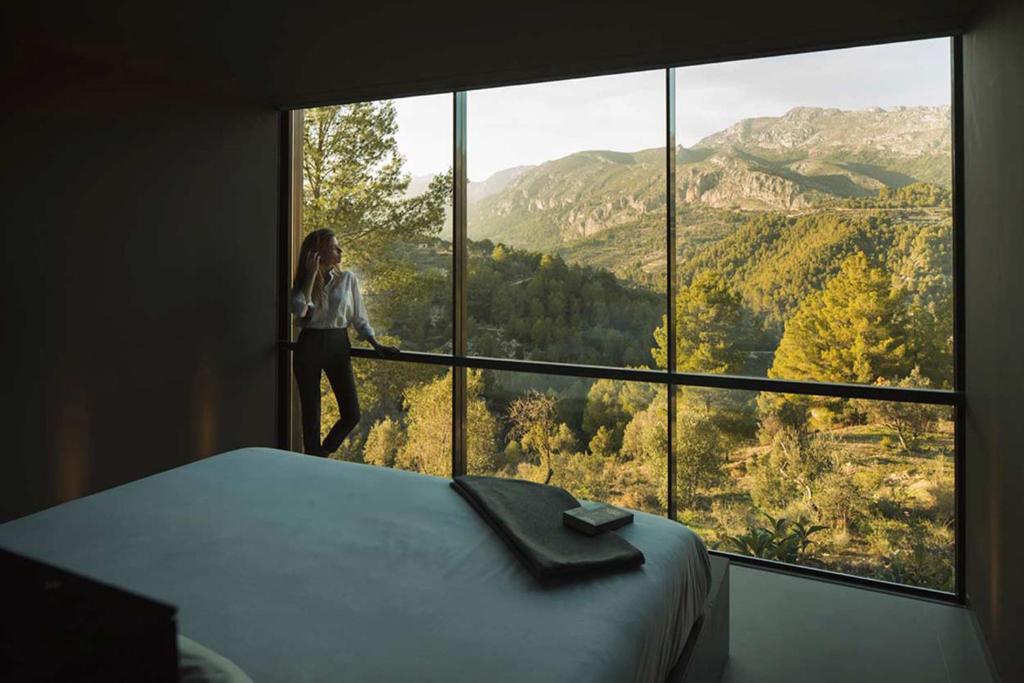
Among the adults-only hotels that exist throughout the country, there is one that surprises both for its architecture and location and for the beauty of the whole complex. It is the Vivoo Landscape Hotel (Carretera, Ctra. D’Alcoi, 10, 03516 Benimantell, Alicante), a 4-star accommodation, near the Guadalest reservoir and half an hour by car from Benidorm.
The hotel is located on an 84,000 square meter plot, in the middle of the valley, fully integrated with the natural landscape, so that both its common facilities and its suites and villas were designed as if they were incredible viewpoints. You can choose between the Pool Suite, with a private heated outdoor Jacuzzi, suites with a panoramic rain shower and mountain views, and several luxury villas, with two infinity pools open all year round. And if all this was not enough to relax, the hotel has a complete spa with a therapeutic circuit based on Ayurvedic culture.
Marques de Riscal Hotel
https://www.marriott.com/hotels/travel/biolc-hotel-marques-de-riscal-a-luxury-collection-hotel-elciego/

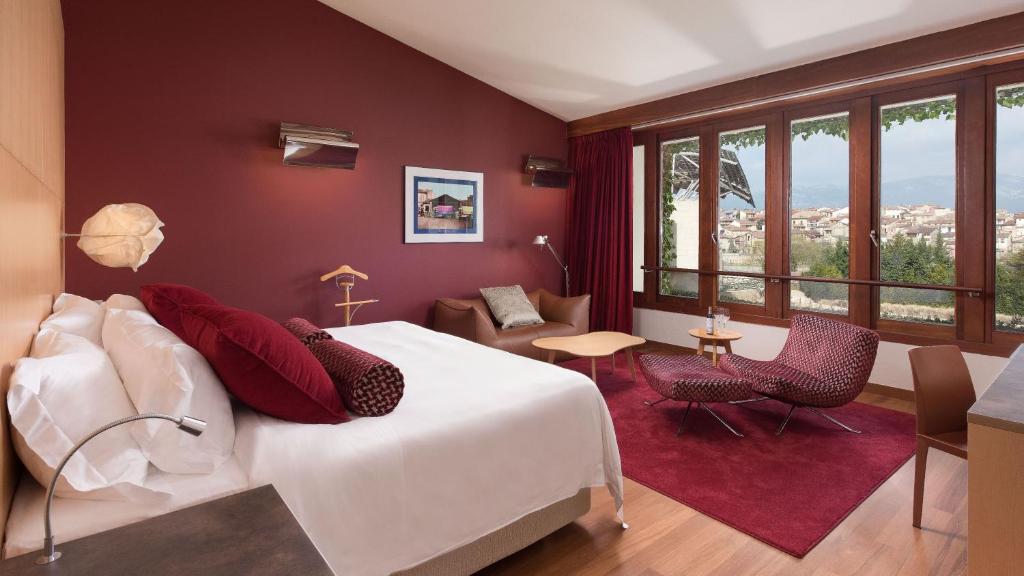
If you want to spend a night in a surprising building with an avant-garde design, as if it were the Guggenheim Museum itself, and even above you are passionate about wine tourism, you will be very pleasantly surprised by the Hotel Marqués de Riscal (Calle Torrea Kalea, 1, 01340 Eltziego, Álava ).
Designed by the Canadian architect Fran Gehry, this 5-star hotel with a titanium roof is located in the medieval town of Elciego (Eltziego). Its 43 rooms, spread over three floors, are unique, as they match the exterior structure of the building, with sloping walls, high ceilings and zigzag windows. In them, you will find all the comforts you can imagine, such as goose feather pillows, cloud lamps, green and black marble bathrooms, coffee and tea service, courtesy toiletries, minibar, cable TV and internet access and room service 24 hours.
In its facilities, you will also find two restaurants, a bar, a gym and a spa with an indoor pool, water jets, a Turkish bath, a Finnish sauna and a rain shower, which also offers wine therapy treatments. And while you enjoy the hotel, you can pay a visit to the historic Marqués de Riscal wineries.
O Semaforo de Fisterra
http://www.hotelsemaforodefisterra.com/en/
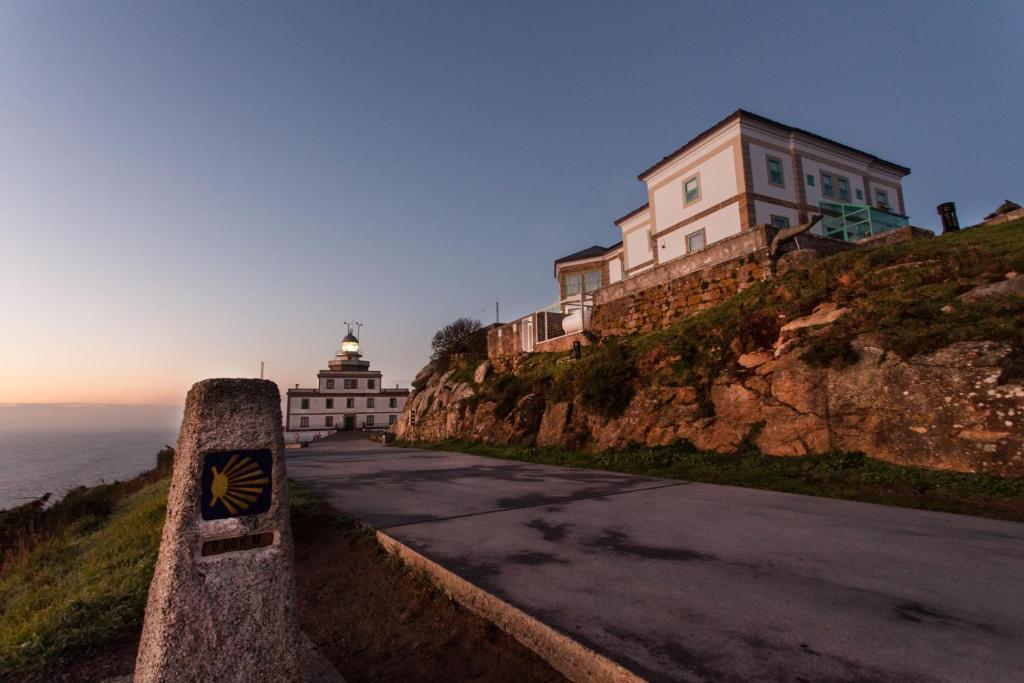
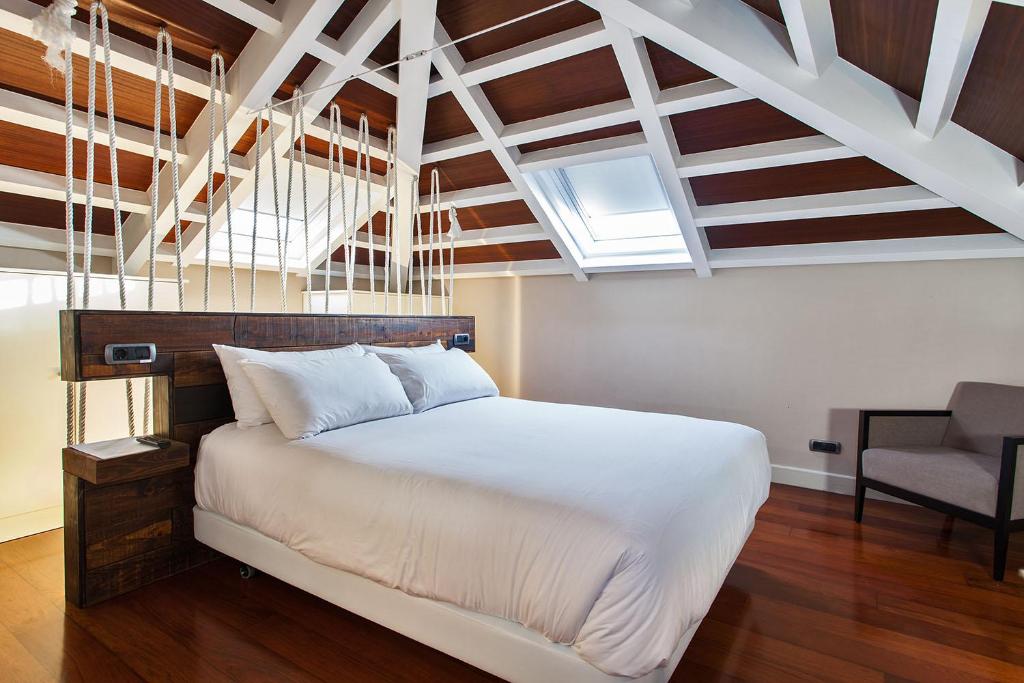
Sleeping at the famous End of the World is possible. You just have to stay in Galicia, in an old lighthouse that is also a 2-star hotel. This would be O Semáforo de Fisterra (Carretera del Faro, s / n, 15155 Finisterre, A Coruña), an incredible place where you can listen to the wind and the sea and that is perfect for travellers looking for rural escapes that are as surprising as they are special. The lighthouse, which rises 138 meters above sea level, was built in 1853, and decades later, in 1888, the annexe building was erected. In 1999 it was converted into a boutique hotel, with five rooms, a restaurant and a cafeteria, where you can forget the world and discover the Galician Costa da Morte.
Toy Hotel
https://www.hoteldeljuguete.com/es


Among all the surprising hotels in Spain, one cannot forget the Toy Hotel (Carrer l’Escoleta, 4, 03440 Ibi, Alicante). This 4-star establishment focuses its theme on toys and cartoons, so among its 21 rooms, you can select those decorated around the Lego, the Nancy doll, the Nenuco, the Pin and Pon or the Playmobil. You will find toys in all of them.
At the Hotel del Juguete, one of the most emblematic dates is Christmas, since activities and special events are organised for this time of year, with the special importance of the Three Kings festival.
 4
Like
Published at 1:41 PM Comments (0)
4
Like
Published at 1:41 PM Comments (0)
Spam post or Abuse? Please let us know
|
|